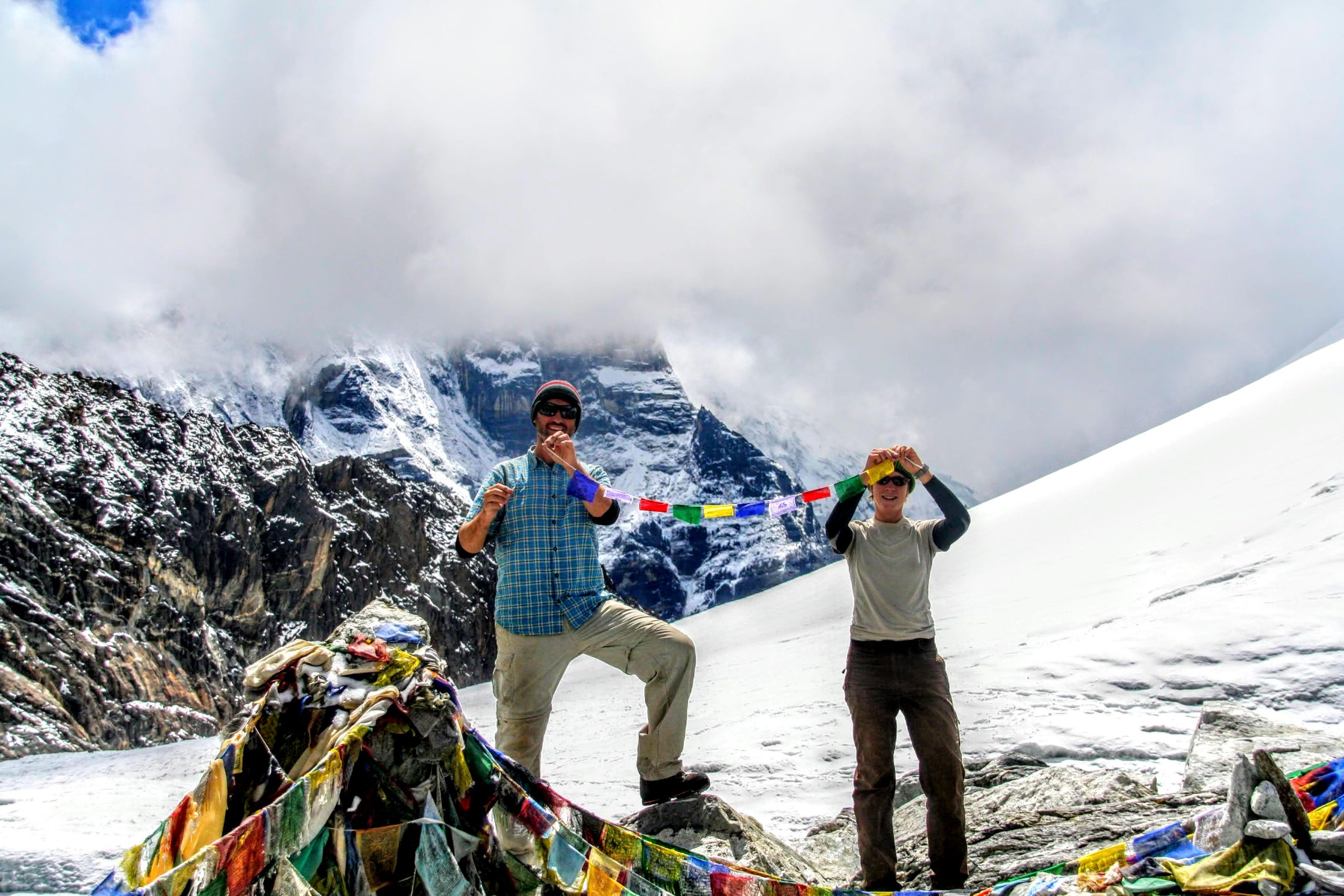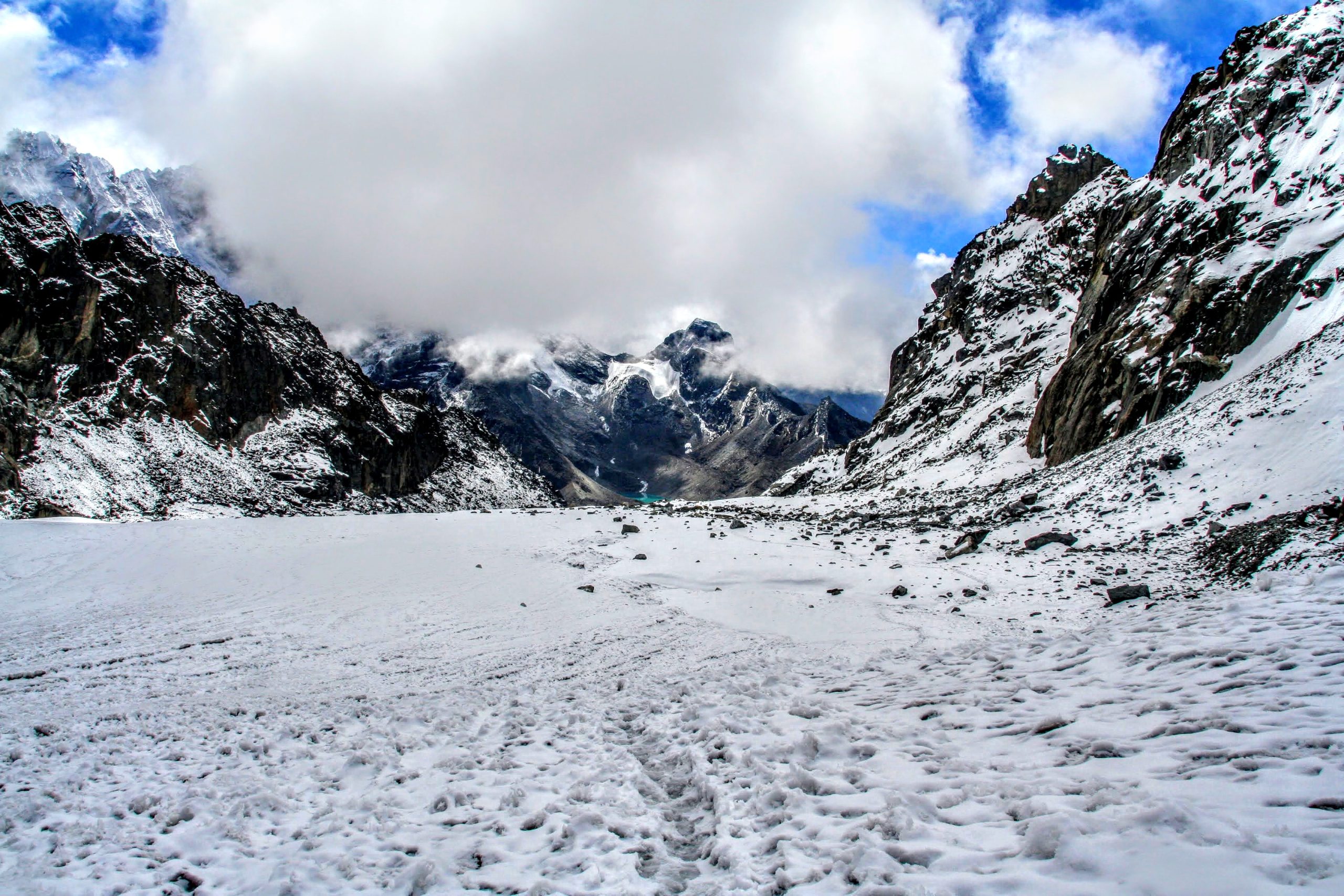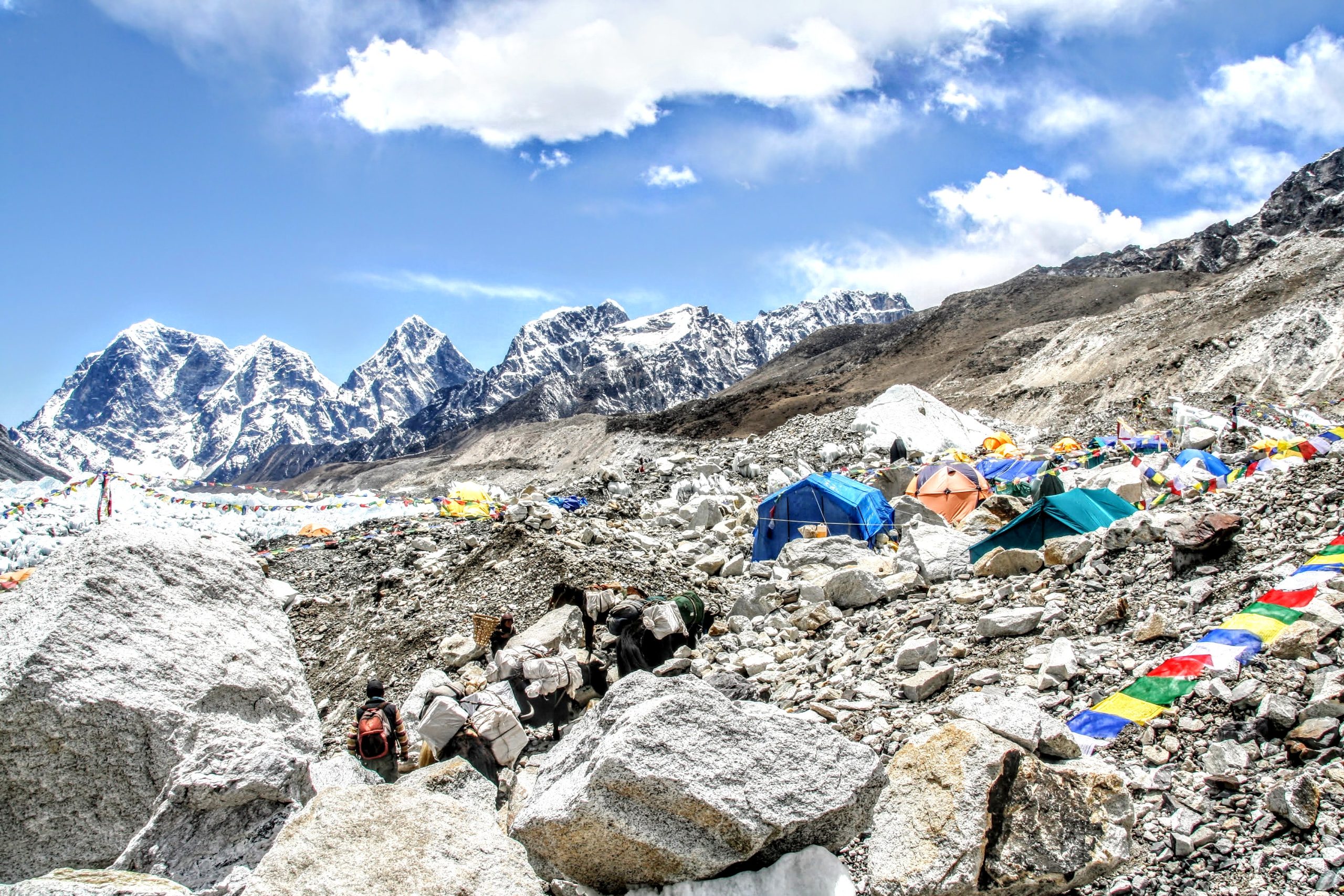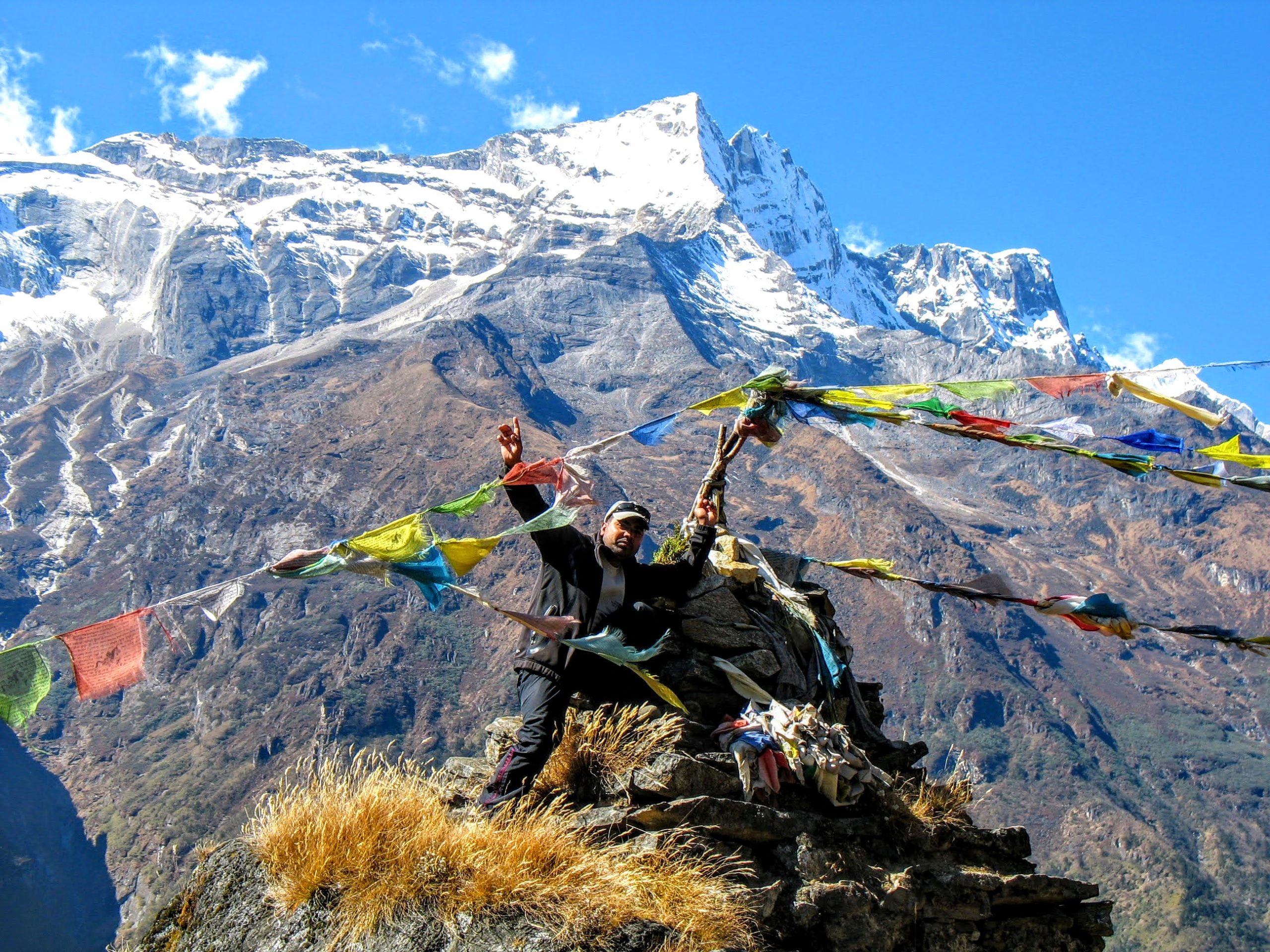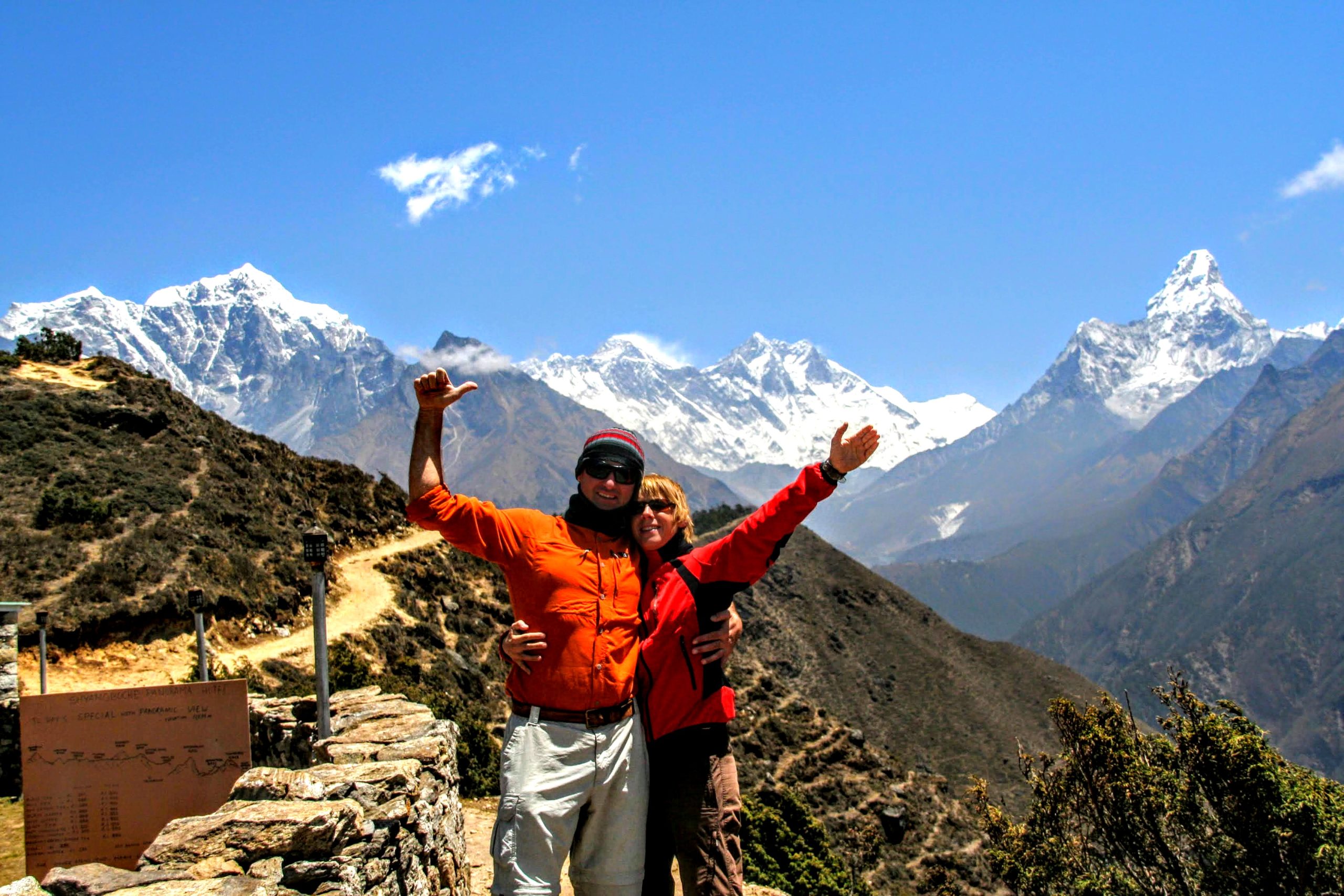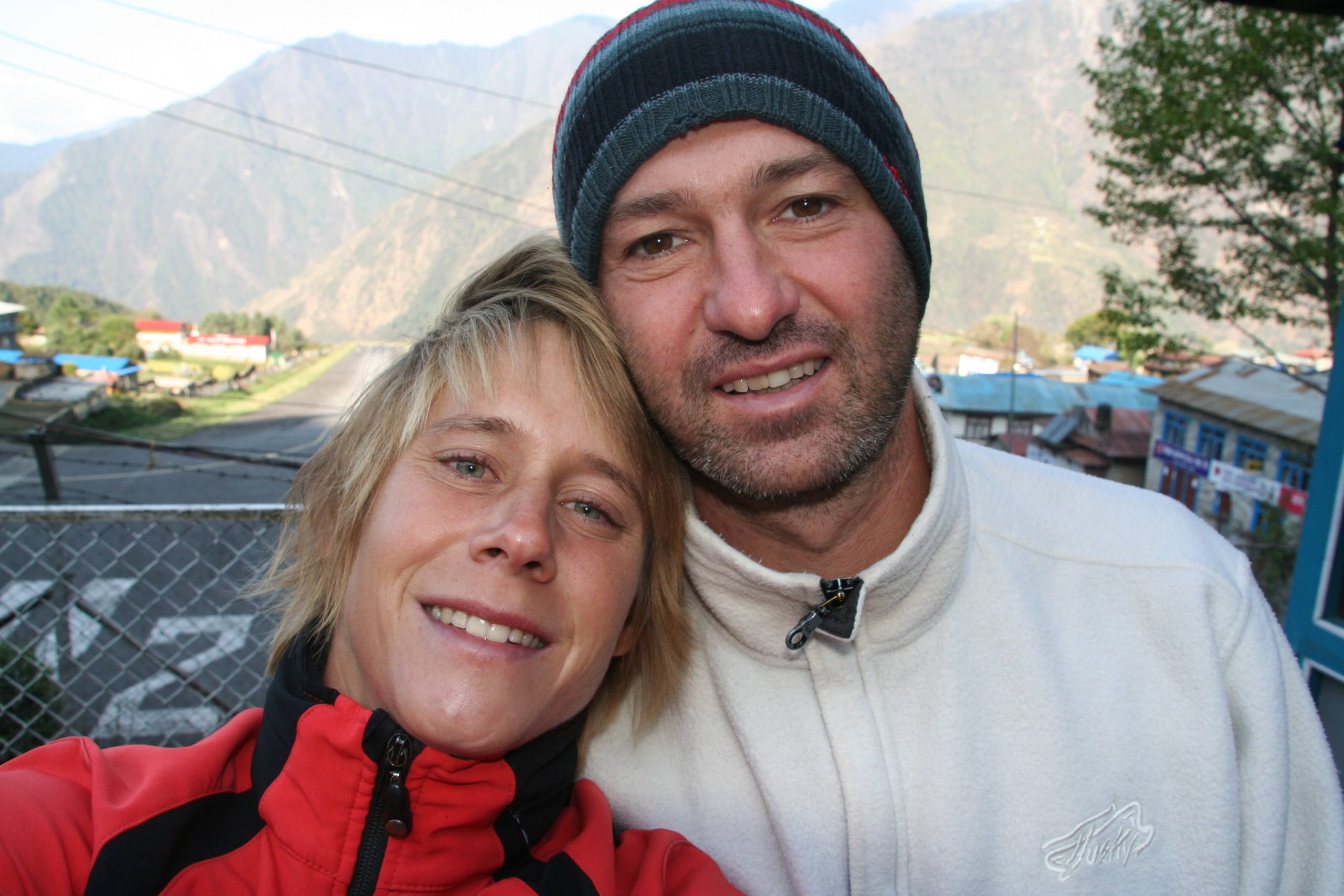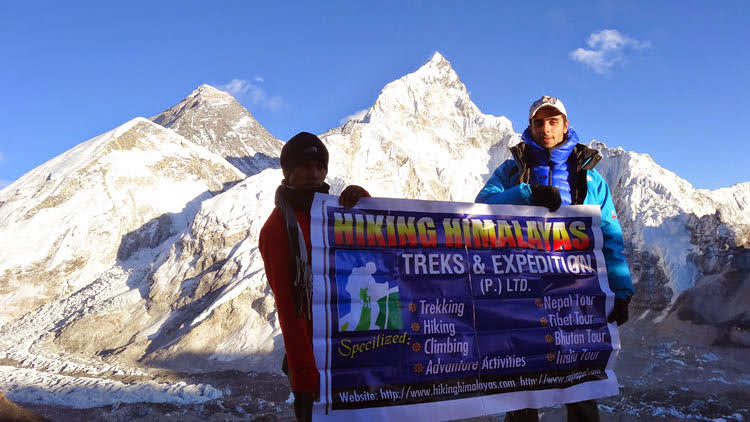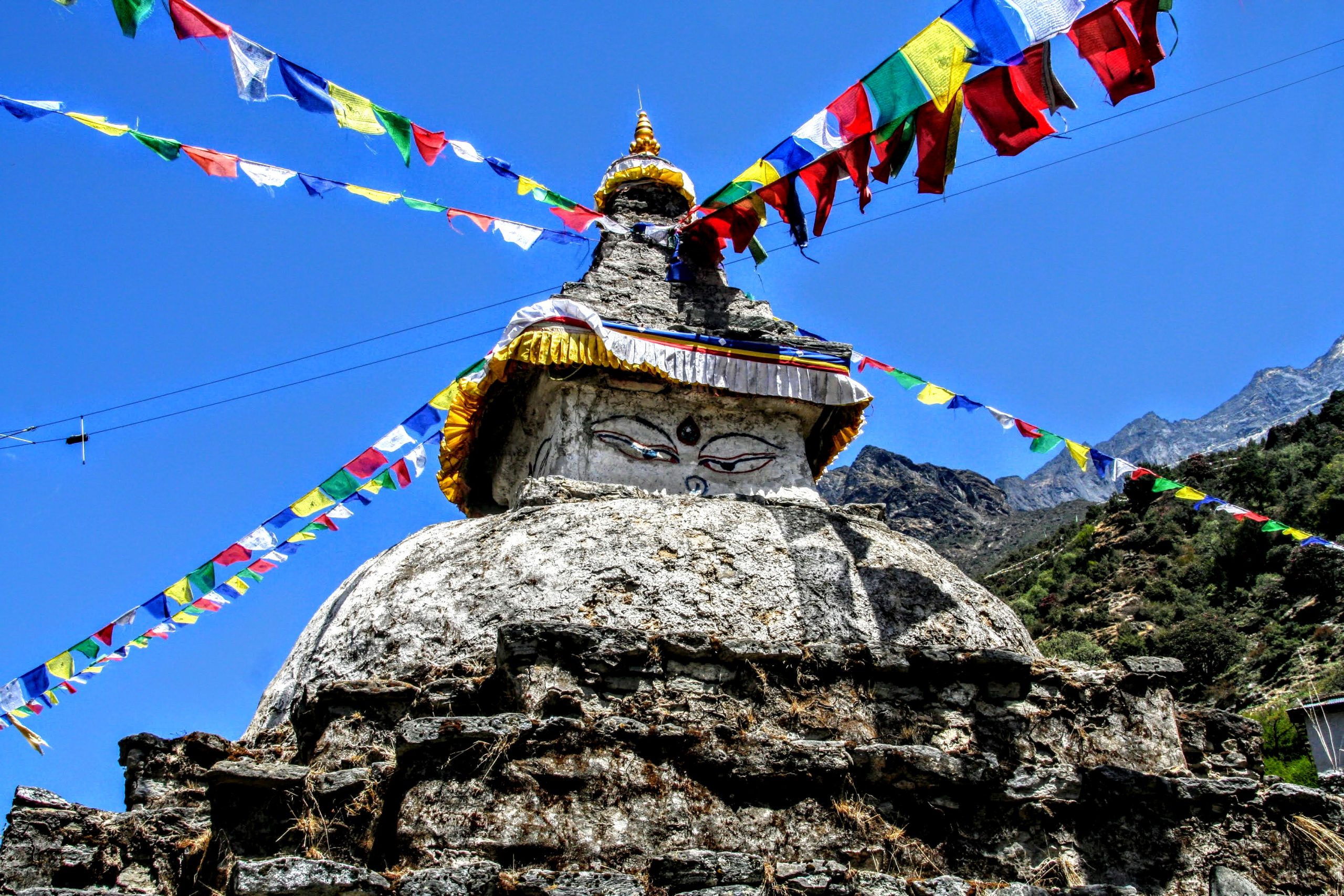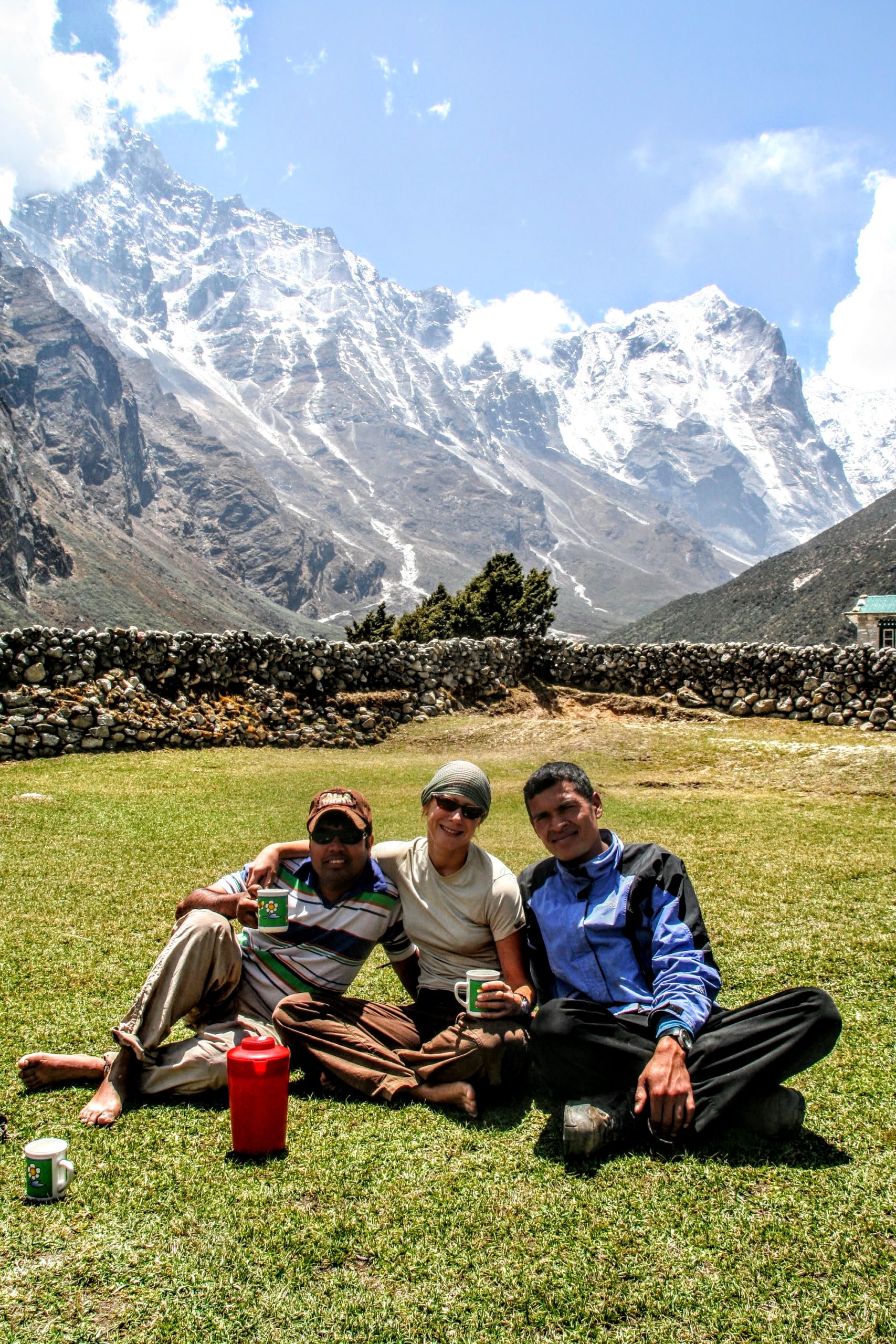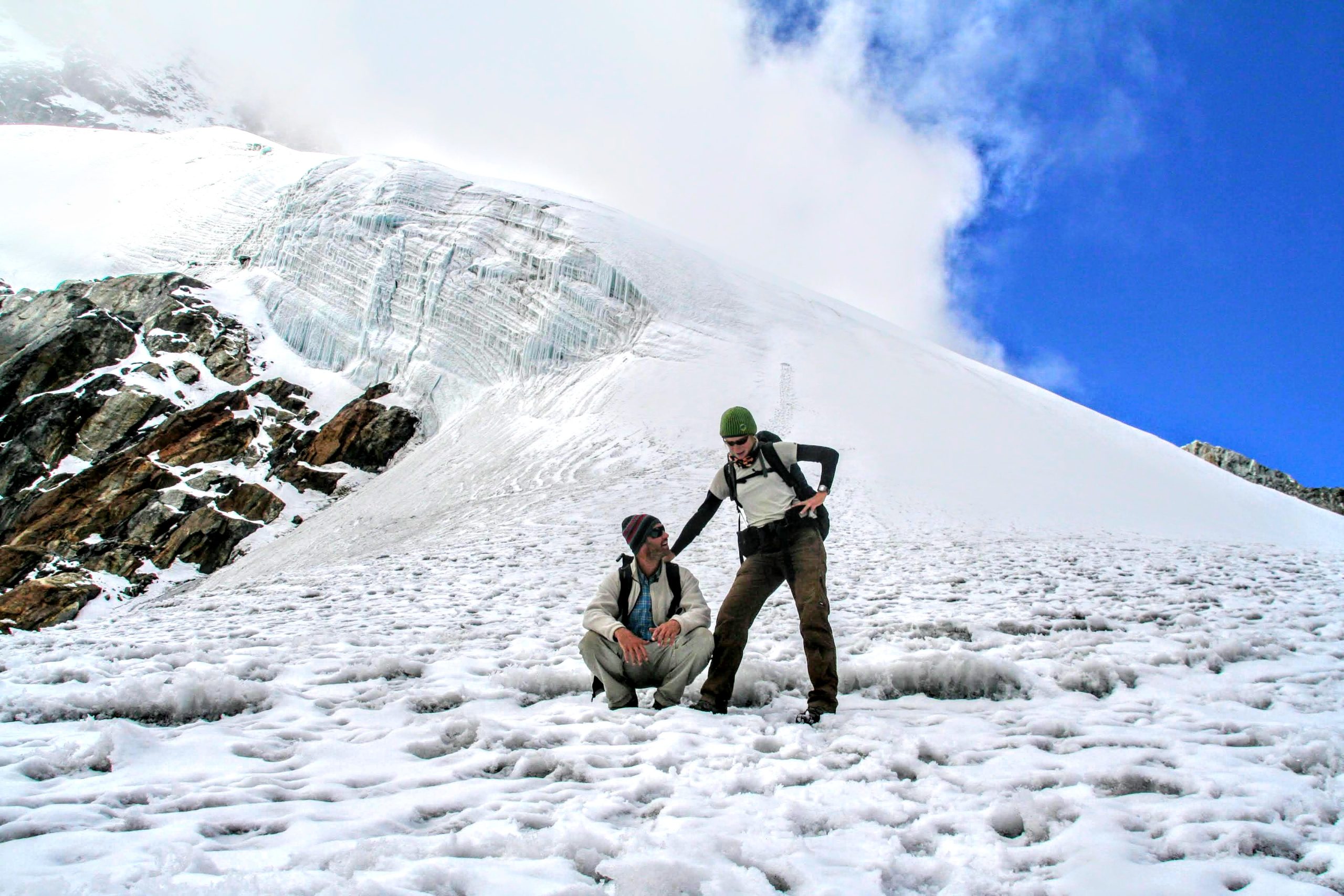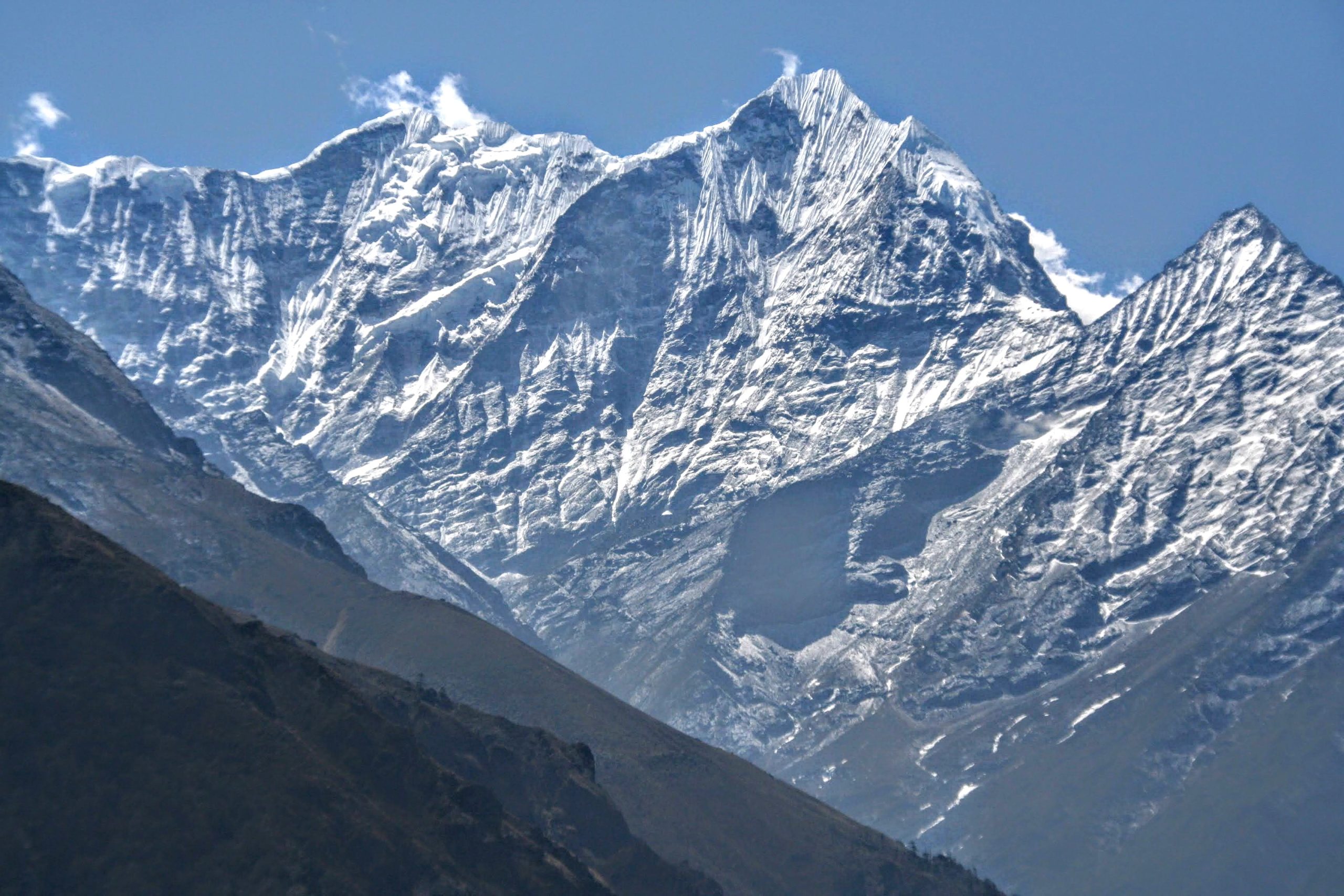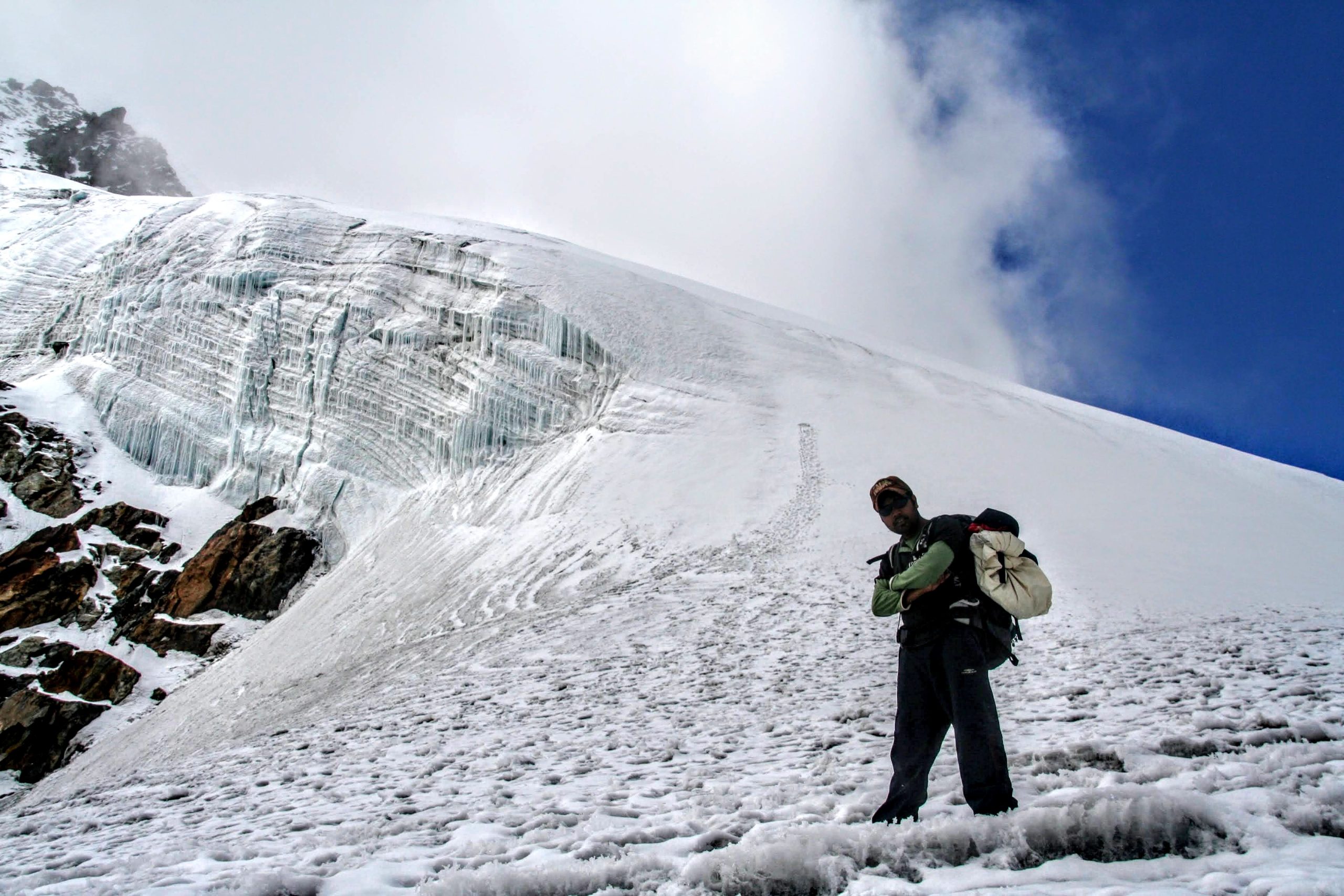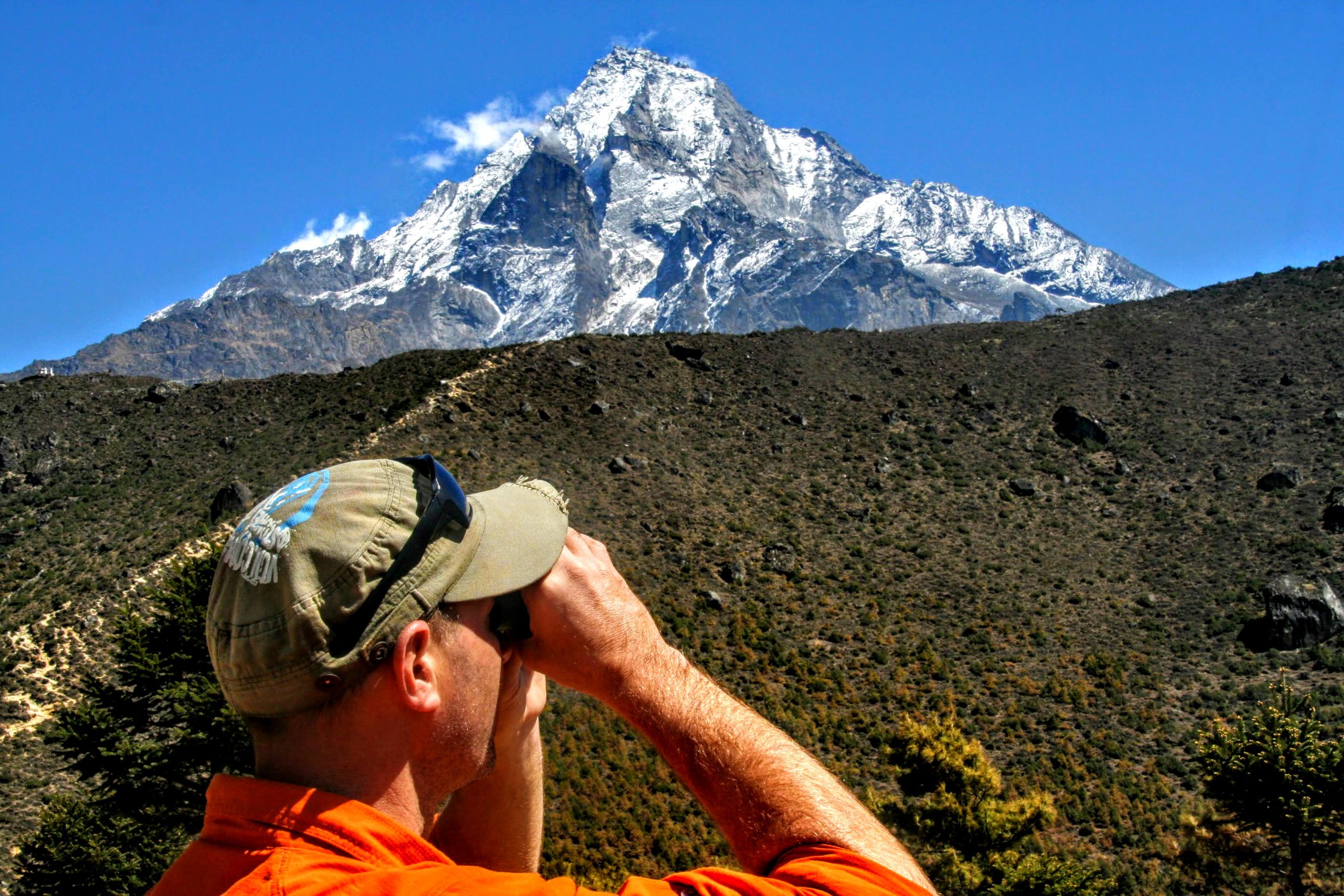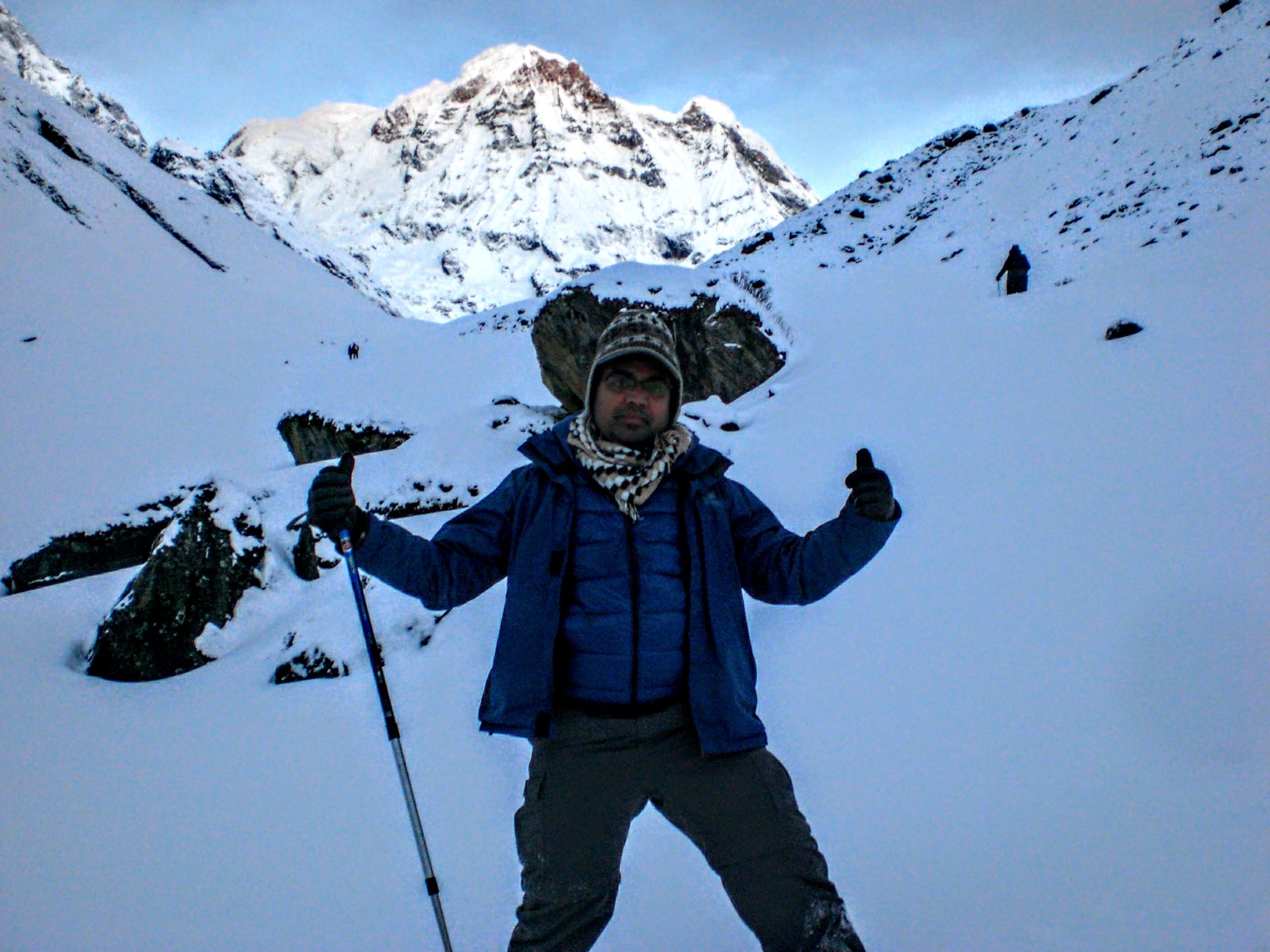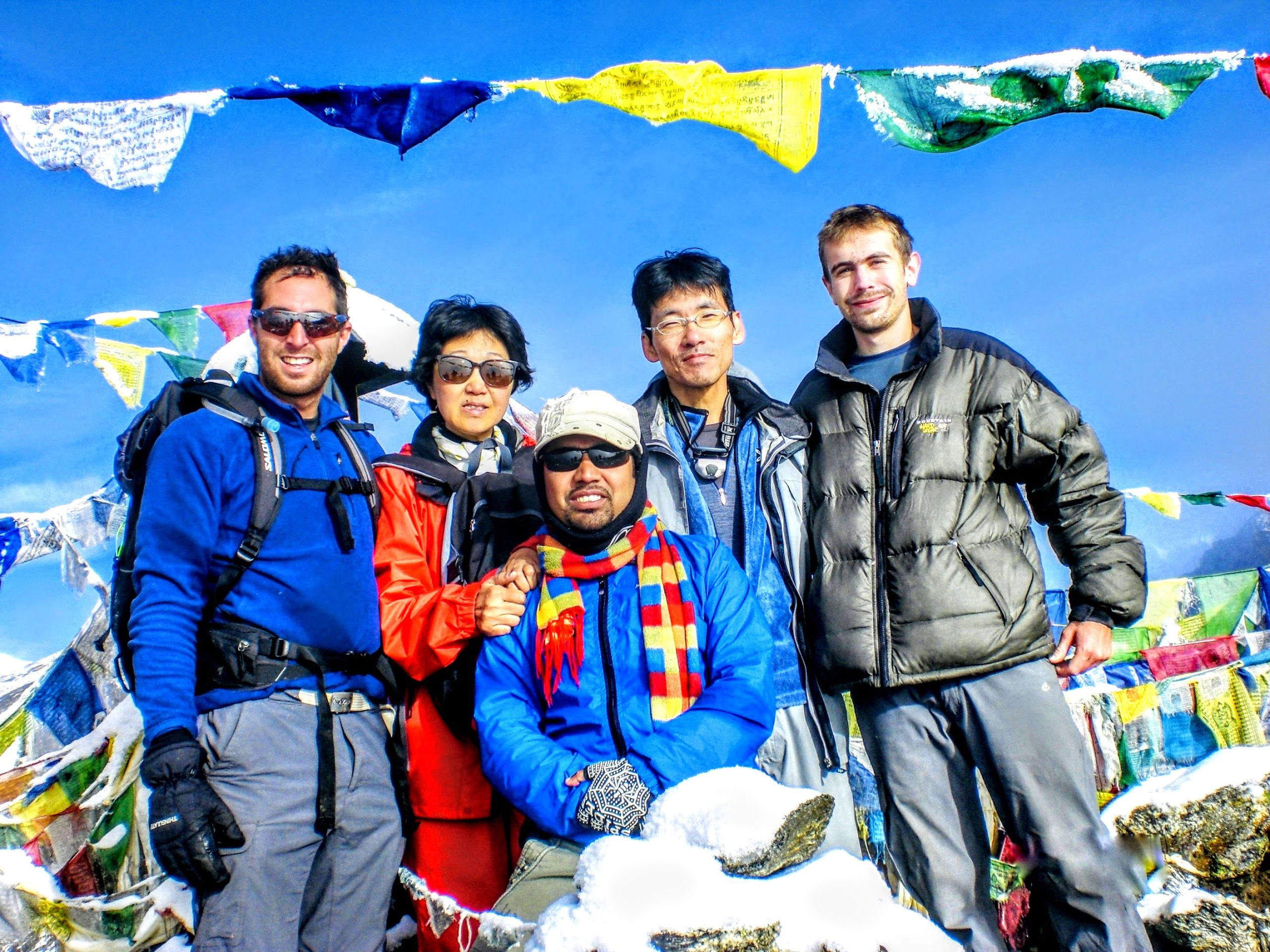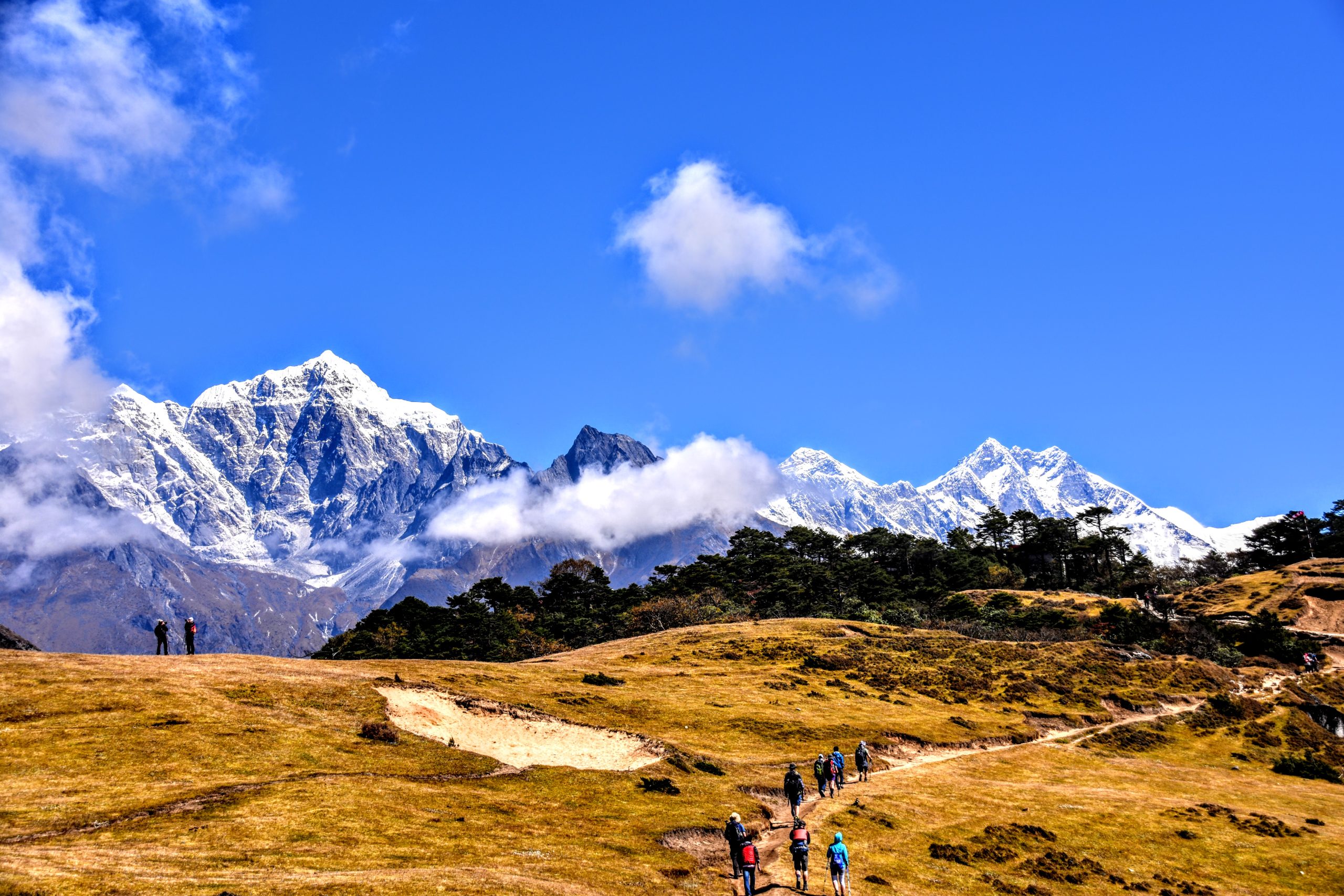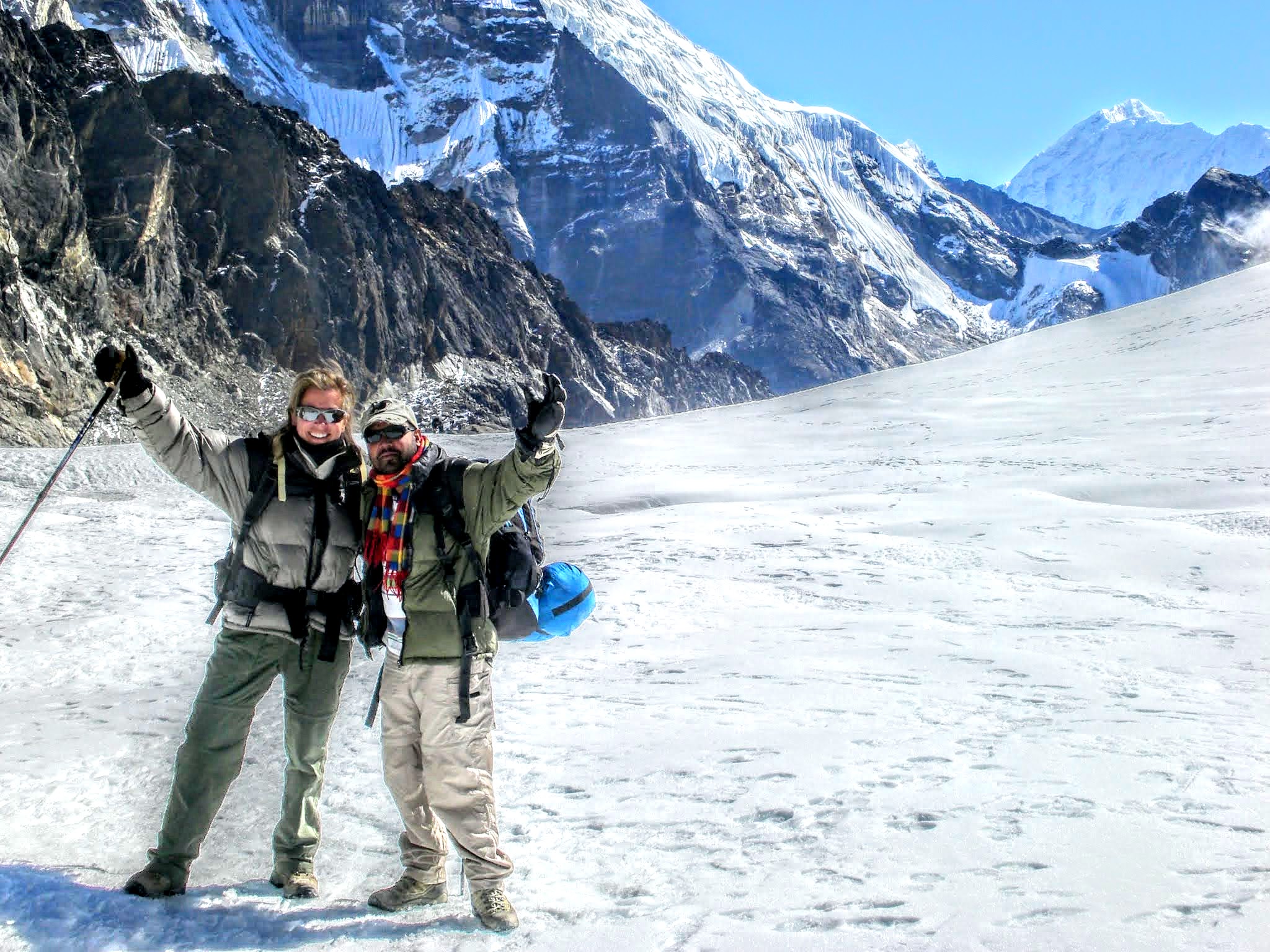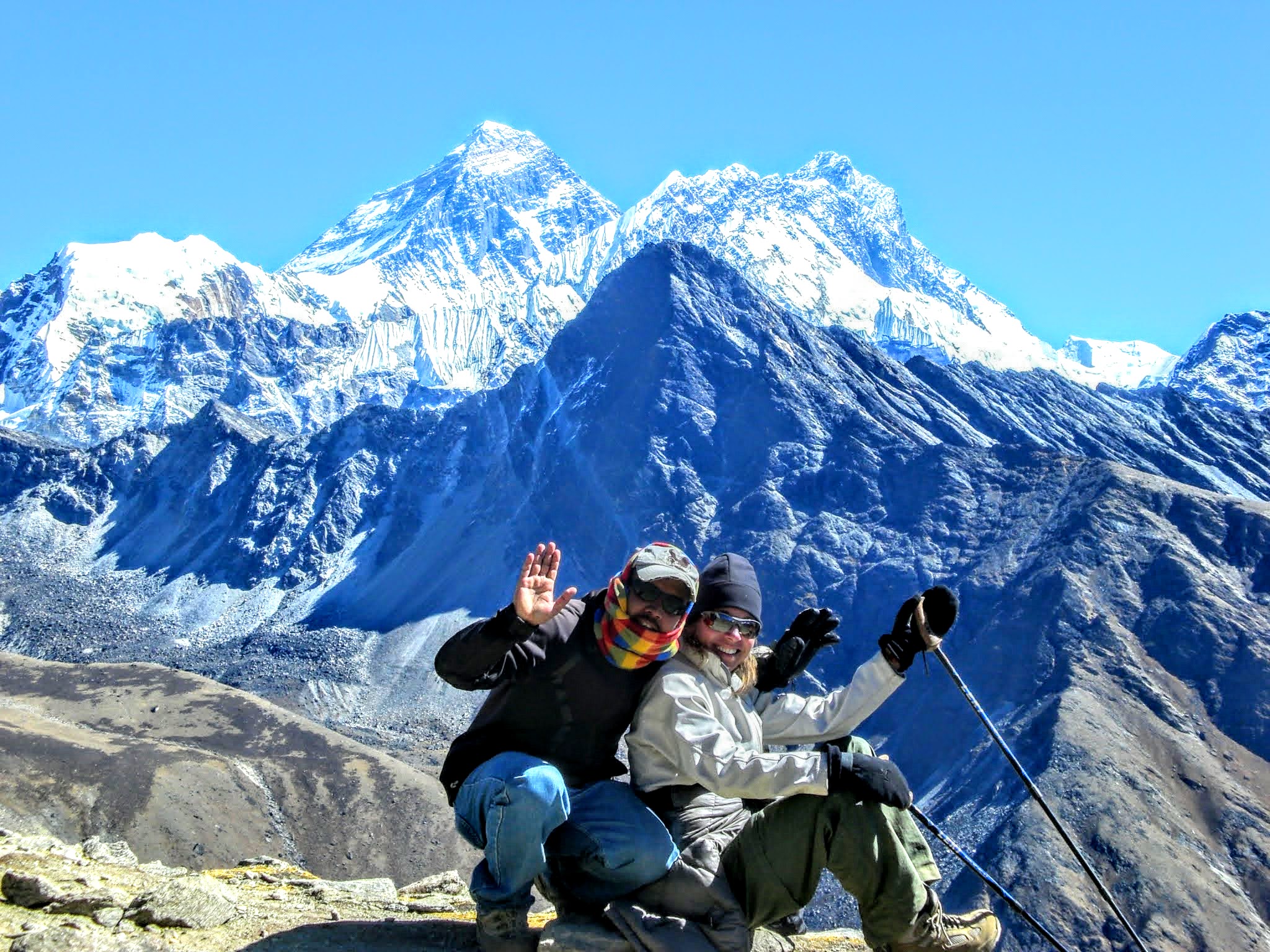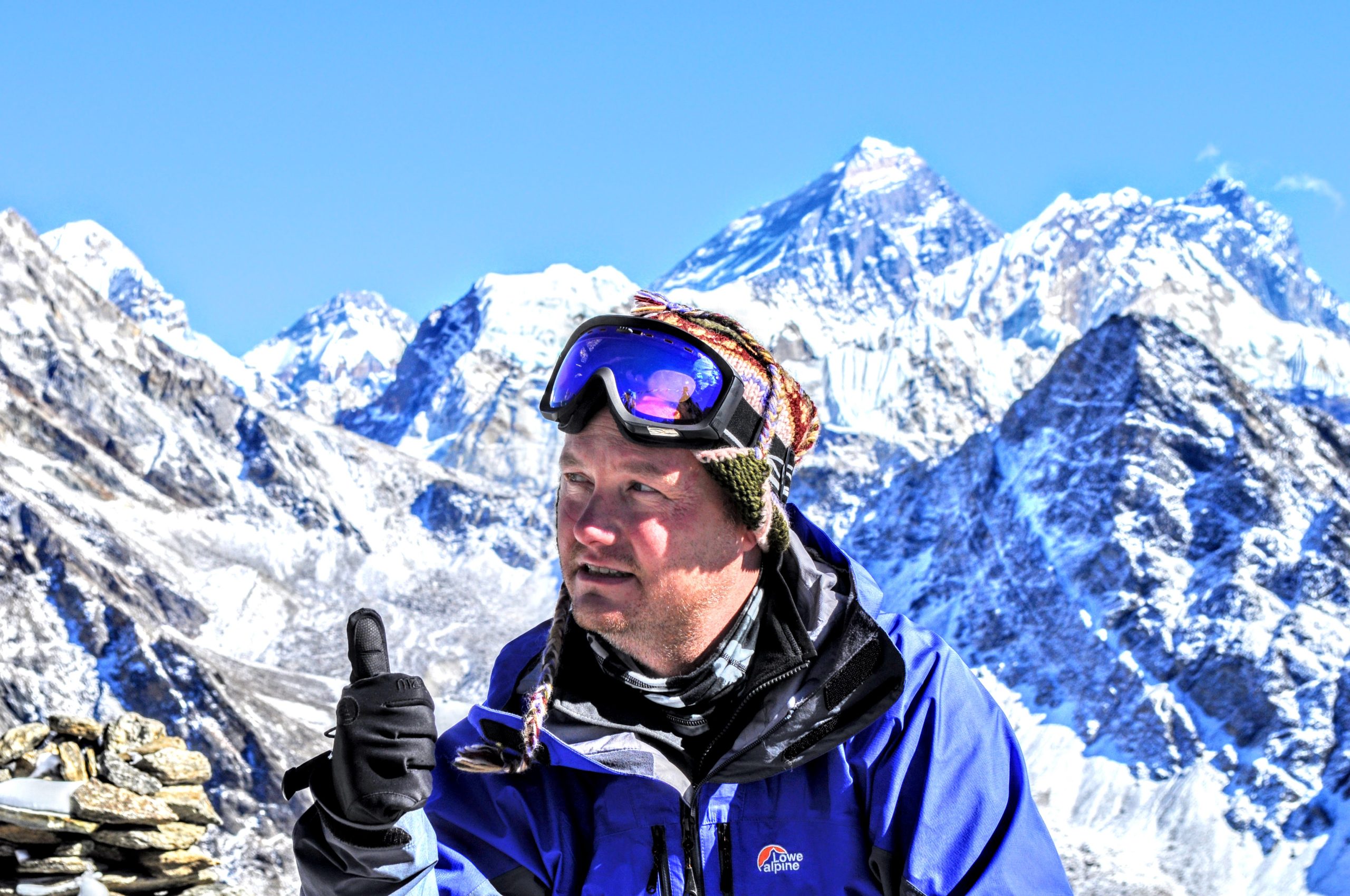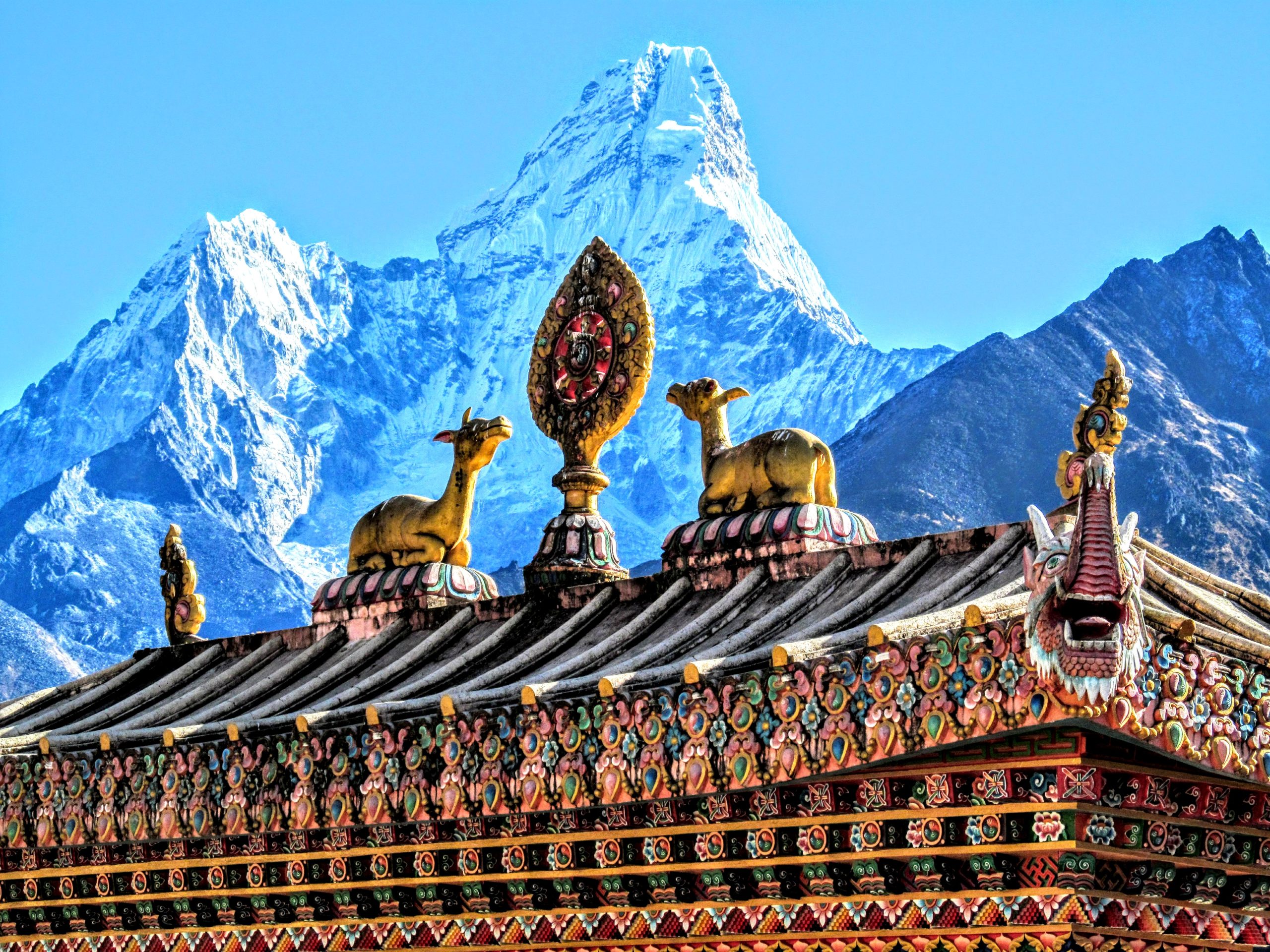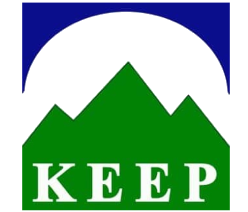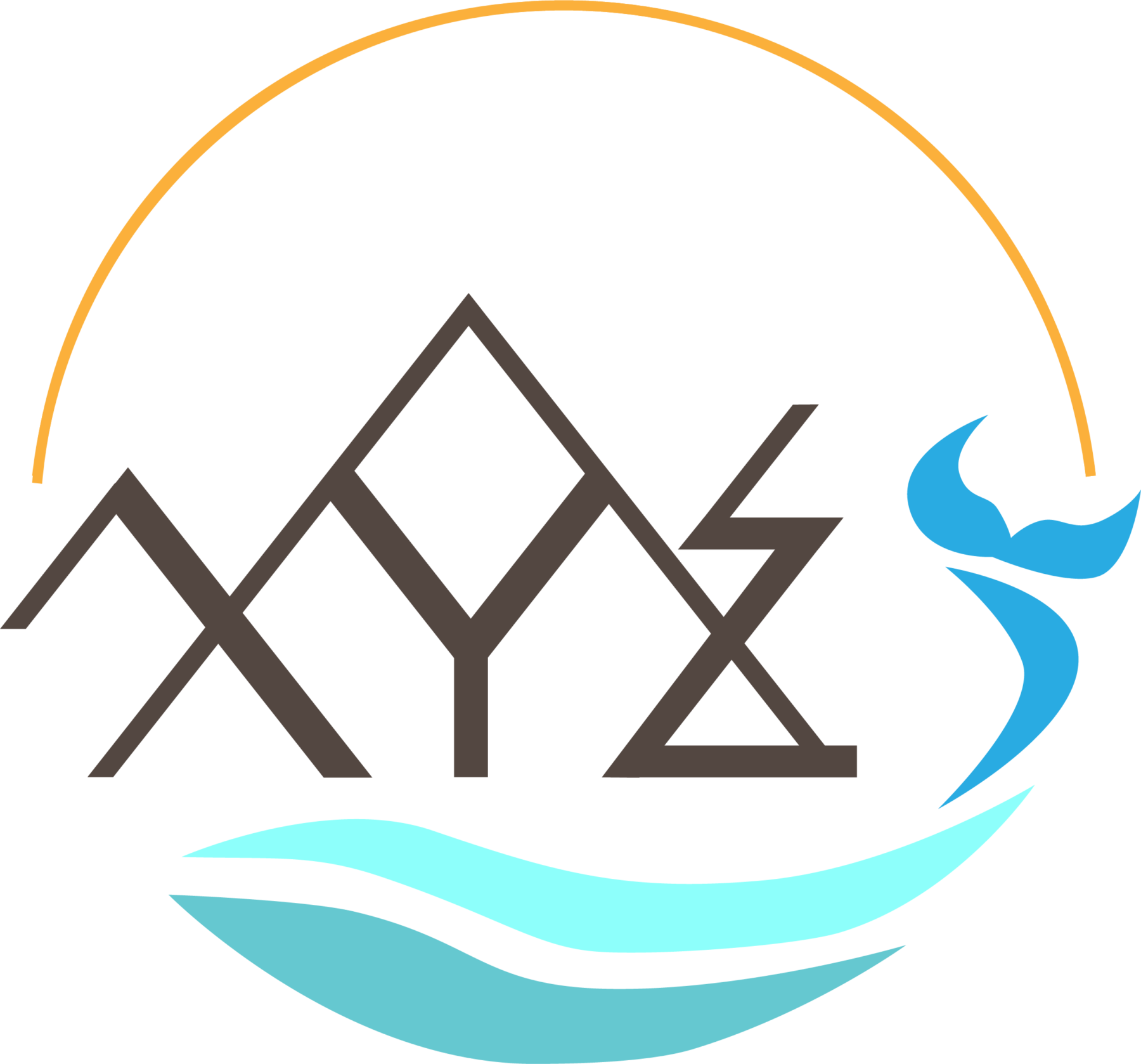Good to Know
- LOCATION
- Everest Region
- DURATION
- 18 Days
- Difficulty Level
- Challenging
- ARRIVAL ON
- Kathmandu Nepal
- DEPARTURE FROM
- Kathmandu Nepal
- TRIP TYPE
- treking
- MAX ALTITUDE
- 5545m
- GROUP SIZE
- 2-10
- MEAL
- Breakfast - Lunch - Dinner
- ACCOMMODATION
- Guest House
- TRANSPORTATION
- By Air / Road
- TRIP CODE
- HHTE ETPT
Everest Three Passes Trek
Trekking Overview and Trip Information
Welcome to the exhilarating world of trekking in Nepal! The Everest Three Passes Trek is an extraordinary adventure that takes you deep into the heart of the Everest region, offering a chance to explore some of the world’s highest peaks, stunning landscapes, and rich Sherpa culture. This comprehensive guide provides essential information for foreign travelers planning to embark on the Everest Three Passes journey.
Geographical knowledge of the land you will tread:
The Everest Three Passes Trek is an adventurous journey that takes you through some of the most challenging and geographically diverse terrains in the Everest region of Nepal. Here’s an overview of the geographical features you will encounter during this trek:
- 1. Himalayan Mountains: The trek takes place in the heart of the Himalayas, featuring several of the world’s highest peaks. Mount Everest (8,848 meters/29,029 feet) is the crown jewel, but you’ll also see Lhotse, Makalu, Cho Oyu, and numerous other stunning peaks along the way.
- 2. Khumbu Region: This trek is centered around the Khumbu region, which is part of the Solukhumbu District in northeastern Nepal. It’s one of the most popular trekking areas in the country, known for its dramatic landscapes and Sherpa culture.
- 3. Sagarmatha National Park: Much of the trek takes place within Sagarmatha National Park, a UNESCO World Heritage site. The park encompasses an area of 1,148 square kilometers and is home to diverse flora and fauna, including rare and endangered species like the snow leopard and red panda.
- 4. Three High Passes: The trek features three challenging high mountain passes:
– Renjo La Pass (5,360 meters/17,585 feet)
– Cho La Pass (5,420 meters/17,782 feet)
– Kongma La Pass (5,535 meters/18,159 feet)
These passes offer some of the most breathtaking views of the Everest region and are a testament to the rugged, high-altitude terrain you’ll encounter. - 5. Gokyo Lakes: The trek takes you to the Gokyo region, where you’ll find the stunning Gokyo Lakes. These six glacial lakes are known for their vibrant blue and turquoise colors, surrounded by towering peaks. Gokyo Ri, a popular viewpoint, provides an exceptional panorama of the lakes and mountains.
- 6. Khumbu Glacier: The Khumbu Glacier is one of the largest glaciers in the region and flows from the Western Cwm, near Everest’s summit. You’ll cross parts of this glacier as you make your way to Everest Base Camp.
- 7. Everest Base Camp: You’ll visit Everest Base Camp, which is located at the foot of Mount Everest’s Khumbu Icefall. It’s a barren and rugged landscape but offers an incredible view of the world’s highest peak.
- 8. Sherpa Villages: You’ll trek through traditional Sherpa villages like Namche Bazaar, Thame, and Khumjung. These villages showcase the unique Sherpa culture, including their distinctive architecture, monasteries, and warm hospitality.
- 9. Kala Patthar: A side trip to Kala Patthar (5,545 meters/18,192 feet) provides one of the most iconic panoramic views of Mount Everest and the surrounding peaks.
- 10. Challenging Terrain: The trek involves a mix of trails, including rocky paths, moraines, steep ascents and descents, and high mountain passes. Trekkers need to be prepared for varied and demanding terrain.
The geographical diversity of the Everest Three Passes Trek ranges from high-altitude glaciers to rugged mountain passes and lush valleys. It’s a journey through some of the most awe-inspiring landscapes on Earth, and it offers a profound appreciation for the natural beauty of the Everest region.
Trail Overview and Cultural Experience Along the Everest Three Passes Trek
The Everest Three Passes Trek is a challenging and geographically diverse adventure that offers not only breathtaking natural beauty but also a rich cultural experience as you journey through the heart of the Everest region. Here’s an overview of the trail and the cultural experiences you can expect:
- 1. Lukla to Phakding: Your trek typically begins with a scenic flight from Kathmandu to Lukla, followed by a descent to Phakding along the Dudh Koshi River. This is your initial introduction to the Sherpa culture.
- 2. Namche Bazaar: As you ascend, you’ll reach Namche Bazaar, a bustling market town and the cultural hub of the Everest region. Explore the town, visit the Everest View Hotel for stunning mountain vistas, and immerse yourself in the Sherpa way of life.
- 3. Thame: A side trip to Thame takes you to a serene Sherpa village. Here, you can visit the Thame Gompa, an important Buddhist monastery, and learn about Sherpa Buddhism and traditions.
- 4. Tengboche: Tengboche is home to the famous Tengboche Monastery, one of the largest monasteries in the Khumbu region. It’s a spiritual center where you can witness monks performing religious rituals against a backdrop of stunning mountain views.
- 5. Dingboche: This picturesque village allows you to observe the Sherpa way of life up close. You can visit local homes, interact with the residents, and gain insights into their customs and traditions.
- 6. Chhukung: A side trip to Chhukung provides an opportunity to explore the alpine environment and interact with climbers and trekkers preparing for their ascent of Island Peak.
- 7. Gokyo: The Gokyo region is known for its pristine glacial lakes and the Gokyo Ri viewpoint. Here, you can enjoy the Sherpa hospitality, taste local food, and learn about the indigenous culture.
- 8. Lobuche: This is a common stop before attempting the challenging high passes. You’ll find teahouses and lodges where you can mingle with fellow trekkers from around the world.
- 9. Everest Base Camp: The trek to Everest Base Camp is a remarkable cultural experience as you’ll pass by climbers, prayer flags, and the bustling atmosphere of Everest’s base camp during climbing seasons.
- 10. Kala Patthar: The climb to Kala Patthar offers an awe-inspiring view of Mount Everest. The small shrine at the summit provides a cultural touchpoint for trekkers to offer prayers and reflections.
- 11. Khumbu Villages: While descending, you’ll revisit familiar Sherpa villages like Namche Bazaar, where you can further immerse yourself in the culture and appreciate the warm hospitality of the Sherpa people.
Cultural Insights:
- – Sherpa Culture: The Sherpa people are known for their resilience and warm hospitality. You’ll have opportunities to visit monasteries, witness religious ceremonies, and learn about their way of life.
- – Buddhist Influence: Buddhism is deeply ingrained in Sherpa culture. Along the trail, you’ll encounter stupas, prayer wheels, prayer flags, and monasteries, all of which play a significant role in their religious and cultural practices.
- – Festivals and Traditions: Depending on the timing of your trek, you may have the chance to witness local festivals and celebrations, offering a deeper cultural experience.
- – Local Cuisine: Savor traditional Sherpa dishes like momo (dumplings), tsampa (roasted barley flour), and yak-based meals, all while sharing stories with fellow trekkers and locals.
The Everest Three Passes Trek is a unique blend of challenging mountain adventure and cultural immersion. As you journey through this iconic region, you’ll not only be captivated by the stunning landscapes but also enriched by the cultural tapestry woven by the resilient and welcoming Sherpa people. It’s a trek that offers both physical challenge and spiritual reward.
Trip Duration:
The Everest Three Passes Trek typically takes around 18 to 21 days to complete, depending on your chosen itinerary and hiking pace.
Best Time to Visit:
The two primary trekking seasons are spring (March to May) and autumn (September to November). These periods offer stable weather, clear skies, and moderate temperatures, making for the most enjoyable trekking conditions.
Permits:
Foreign traveler’s need two permits for the Everest Three Passes Trek:
- 1. Sagarmatha National Park Permit: This permit costs approximately USD 30 and is required to enter the national park.
- 2. Trekkers’ Information Management System (TIMS) Card: This card costs around USD 20 for individual trekkers and is necessary for trekking in the Everest region.
Accommodation and Meals:
Teahouses and lodges along the trekking route provide basic accommodation and meals. You’ll find a variety of traditional Nepali dishes, as well as international options, to refuel during your journey.
Trekking Difficulty:
The Everest Three Passes Trek is considered a challenging trek and requires good physical fitness. Proper acclimatization is crucial to avoid altitude sickness when ascending to high altitudes.
Equipment and Packing:
Pack essentials like sturdy hiking boots, warm clothing layers, a good-quality sleeping bag, and a reliable backpack. Consult with your tour operator or guide for a comprehensive packing list.
Guides and Porters:
Hiring a local guide and/or porter is recommended for safety and to enhance your cultural experience. They can assist with navigation, carry heavy loads, and provide valuable insights into the region.
Safety Precautions:
- – Acclimatize properly to avoid altitude sickness.
- – Stay hydrated and drink purified water.
- – Dress in layers to cope with changing temperatures.
- – Carry a first-aid kit and any necessary medications.
Facilities and accommodation along the Everest Three Passes Trek
The Everest Three Passes Trek is a challenging and adventurous trek in the Everest region of Nepal. Along the trek, you’ll find various facilities and accommodation options to cater to trekkers’ needs. Keep in mind that the quality and availability of facilities can vary depending on the season and the specific location along the trek. Here are some typical facilities and accommodation options you can expect:
1. Tea Houses (Lodges):
– Tea houses are the most common form of accommodation along the Everest Three Passes Trek. These are basic lodges run by local families or businesses.
– They offer simple rooms with twin beds or dormitory-style accommodations.
– Basic meals are available, including a variety of Nepali and international dishes.2. Guesthouses:
– Some villages along the trek may have guesthouses that offer slightly more comfortable accommodations compared to tea houses.
– Guesthouses often have attached bathrooms and more spacious rooms.3. Camping:
– For those who prefer a more rugged experience, camping is an option. You can bring your own camping gear or hire a trekking company that provides it.
– Camping offers more privacy and flexibility in terms of choosing your campsite.4. Food:
– Most tea houses and guesthouses serve a variety of meals, including dal bhat (rice and lentils), noodles, soups, and a range of snacks.
– The availability of food can be limited at higher elevations, so it’s essential to plan your meals in advance and carry some snacks.5. Drinking Water:
– Bottled water is available at tea houses and guesthouses, but it can be expensive and not environmentally friendly.
– Trekkers are encouraged to bring reusable water bottles and use water purification methods or iodine tablets to treat tap water or natural water sources.6. Electricity and Charging:
– Many tea houses and guesthouses have electricity, but it may be limited to specific hours, and there may be a fee for charging your devices.
– Solar power and generators are commonly used to provide electricity.7. Showers:
– Hot showers are available at some lodges for an additional fee.
– In more remote areas and at higher elevations, you may need to use bucket showers or washbasins with cold water.8. Internet and Phone:
– Internet access and mobile phone coverage are limited and unreliable in many parts of the trek, especially at higher altitudes.
– Some lodges may offer Wi-Fi for a fee, but the connection can be slow and intermittent.
It’s important to note that the facilities become more basic and limited as you gain altitude, so it’s essential to be prepared for the challenges of high-altitude trekking. It’s recommended to book accommodations in advance during the peak trekking seasons (spring and autumn) as these areas can get crowded. Trekking with a reputable guide or porter can also enhance your overall experience and provide valuable local knowledge about facilities and conditions along the route.
Can Beginners Trek to Everest Three Passes Trek
The Everest Three Passes Trek is an exceptionally challenging and demanding trek in the Everest region of Nepal. It involves crossing three high mountain passes with elevations exceeding 5,000 meters (16,404 feet), and it traverses rugged and remote terrain. While it is technically possible for beginners to attempt this trek, it is not recommended for several important reasons:
- 1. High Altitude: The Everest Three Passes Trek takes you to extremely high altitudes where the air is thin, and altitude sickness is a significant concern. Beginners are more susceptible to altitude-related illnesses like acute mountain sickness (AMS), which can be life-threatening.
- 2. Physical Fitness: This trek requires a high level of physical fitness and endurance. You will be hiking long distances each day, often on steep and challenging terrain. Beginners may not have the necessary stamina and strength for this level of trekking.
- 3. Technical Skills: Some sections of the trek may require basic mountaineering skills, including the use of crampons and ice axes. Beginners typically do not possess these skills.
- 4. Extreme Weather: The Everest region can experience harsh and unpredictable weather conditions, including extreme cold and snowfall. Inexperienced trekkers may not be adequately prepared for such conditions.
- 5. Experience: The Everest Three Passes Trek is remote and less developed compared to other treks in the region. Beginners may struggle with navigation and may not have the experience to handle unexpected situations.
- 6. Health Risks: Due to the remote nature of the trek, access to medical facilities is limited. In the event of illness or injury, evacuation can be challenging and costly.
For beginners or individuals with limited trekking experience, it is strongly advised to start with less strenuous treks in the Everest region or elsewhere in Nepal. These treks can help you build your fitness and gain experience in a less challenging environment. Additionally, hiring an experienced guide and trekking with a reputable trekking company can significantly enhance safety and overall enjoyment.
Before attempting any high-altitude trek, it is crucial to consult with a medical professional, undergo proper acclimatization, and be well-prepared physically and mentally. Safety should always be the top priority in high-altitude and challenging trekking environments.
Alternative Treks You Can Consider in Everest Three Passes Trek
If you are interested in trekking in the Everest region of Nepal but feel that the Everest Three Passes Trek might be too challenging for your skill and experience level, there are several alternative treks that offer beautiful landscapes and cultural experiences. These alternatives provide a more accessible and less strenuous trekking experience. Here are some options:
- 1. Everest Base Camp Trek: The Everest Base Camp Trek is one of the most popular and well-traveled routes in the Everest region. While it still involves trekking to high altitudes, it does not require crossing the challenging high passes. You can visit Everest Base Camp and enjoy stunning views of the surrounding mountains.
- 2. Gokyo Lakes Trek: The Gokyo Lakes Trek is another beautiful trek in the Everest region. It takes you to the pristine Gokyo Lakes, offering stunning reflections of the surrounding peaks. While it involves some high-altitude trekking, it does not require crossing the three passes.
- 3. Everest View Trek: This is a shorter trek that takes you to the village of Tengboche, where you can visit the famous Tengboche Monastery. The trek provides breathtaking views of Mount Everest and other Himalayan peaks.
- 4. Pikey Peak Trek: The Pikey Peak Trek is a lower-altitude trek in the Everest region. It offers fantastic views of Mount Everest and other mountains. This trek is less challenging in terms of altitude, making it suitable for trekkers looking for a more moderate experience.
- 5. Arun Valley Trek: The Arun Valley Trek is a less-traveled route in the Everest region that offers a mix of cultural experiences and natural beauty. It takes you through lush forests and remote villages along the Arun River.
- 6. Sherpa Cultural Trek: For those interested in learning more about the Sherpa culture, you can opt for a cultural trek that focuses on visiting Sherpa villages, monasteries, and experiencing their way of life.
- 7. Everest Panorama Trek: This is a relatively short trek that takes you to the village of Namche Bazaar and offers panoramic views of Everest and neighboring peaks. It’s a great option for trekkers with limited time or those looking for a less strenuous trek.
When choosing an alternative trek in the Everest region, consider your fitness level, the amount of time you have, and your trekking experience. Regardless of the trek you choose, it’s essential to be well-prepared, acclimatize properly, and consider hiring an experienced guide to ensure a safe and enjoyable experience in this stunning part of Nepal.
The Everest Three Passes Trek is a once-in-a-lifetime adventure that combines natural beauty, cultural immersion, and physical challenge. Prepare well, choose the right season, and embrace the experience as you embark on this epic journey through the awe-inspiring landscapes and culture of the Everest region. It’s sure to be a trek of a lifetime!
Highlights
1. Breathtaking Mountain Views: The trek offers unparalleled views of the world’s highest peaks, including Mount Everest (8,848 meters or 29,029 feet), Lhotse, Makalu, Cho Oyu, and many others. The views from high mountain passes and viewpoints are awe-inspiring.
2. Crossing Three High Passes:
– Kongma La Pass (5,535 meters/18,159 feet): This pass offers panoramic views of Everest, Lhotse, Makalu, and the Khumbu Glacier.
– Cho La Pass (5,420 meters/17,782 feet): This pass involves a challenging ice and rock scramble and leads to the pristine Gokyo Lakes.
– Renjo La Pass (5,360 meters/17,586 feet): Renjo La offers a stunning view of Gokyo Lakes and the Everest massif.
3. Exploring Remote Villages: The trek takes you through Sherpa villages like Namche Bazaar, Dingboche, Thame, and Gokyo, allowing you to immerse yourself in the unique Sherpa culture and hospitality.
4. Gokyo Lakes: The trek passes by the mesmerizing Gokyo Lakes, a series of turquoise lakes surrounded by snow-capped peaks. The reflections in the lakes create a surreal landscape.
5. Visit to Everest Base Camp: Although not the main focus of this trek, you have the opportunity to visit Everest Base Camp, where climbers gather before their summit attempts.
6. Diverse Landscapes: The trek offers a diverse range of landscapes, from lush forests and rhododendron groves to high alpine terrain and glacial valleys. The variety of scenery is captivating.
7. Challenging Adventure: The Everest Three Passes Trek is challenging both physically and mentally, making it a rewarding adventure for experienced trekkers seeking a true Himalayan expedition.
8. Wildlife and Flora: Keep an eye out for Himalayan wildlife, including yaks, marmots, and various bird species. The region is also known for its beautiful rhododendron forests in bloom during the spring season.
9. Cultural Experiences: like TengbochYou can explore ancient monasteries e Monastery and experience Sherpa Buddhist culture, rituals, and festivals.
10. Teahouse and Lodge Accommodation: While challenging, the trek provides the comfort of teahouses and lodges along the way, where you can enjoy local food and interact with fellow trekkers.
The Everest Three Passes Trek is a bucket-list adventure for many trekkers who seek a challenging and rewarding Himalayan experience. It’s essential to be well-prepared, acclimatize properly, and consider hiring a knowledgeable guide to fully enjoy the highlights of this trek safely.
Itinerary
Landing in Kathmandu is quite an experience. The views of the Mountain ranges from the window seat of the airplane are totally amazing.
Following your arrival at Tribhuvan International Airport, You’ll be welcomed to Nepal by a representative of Hiking Himalayas at TIA’s arrival terminal. We’ll transfer you to the hotel in a private car.
Overnight Stay in Kathmandu.
A flight to Lukla and landing on a steep mountain runway bring us to the start of our trek at the village of Lukla(2850m). After meeting the crew, we head up the Dudh Koshi Valley on a well-marked trail and then stay overnight in Phakding(2656m).
Overnight stay in Phakding.
After breakfast, we hit the trail and head towards Namche Bazaar. The trail leads to the river on high-suspension bridges several times over the Dudh Koshi river. We’ll enter Sagarmatha National Park after crossing Monjo(2845m). We’ll ascend aggressively with the trail to Namche(3450m) enjoying some breathtaking views. If the weather is clear, we get the first glimpse of Mt Everest. Namche is the main trading village in the Khumbu and has a busy Saturday market – a meeting place for the Hindu traders from the lowlands and the Tibetan yak caravans that have crossed the glaciated Nangpa La.
Overnight Stay in Namche.
Today, we’ll spend our day in Namche Bazaar, for getting used to the changing altitude. We’ll explore the Namche Bazaar and near destinations. Namche is tucked away between two ridges amidst the giant peaks of the Khumbu and has an abundance of lodges, tea shops, and souvenir shops. It is an ideal place to spend a day, acclimatizing to the new altitude before heading off towards Tengboche.
We’ll hike to Hotel Everest View(3962m), from here, you’ll be able to enjoy the views of Mt.Everest, Lhotse, Thamserku, and Ama Dablam. We’ll visit Khunde Hospital(3840m) set up by Sir Edmund Hillary. There are also good views from the National Park Centre and Museum above the town.
Overnight Stay in Namche.
Today, After Breakfast, we’ll head for Thame which will take about 4-5 hours. We’ll trek through fields, forests, and sherpa villages of Thamo(3480m) – A village with old stone houses, Gumba, and Samde village, finally making our way to the Thame(3800m) Village. We’ll visit an old monastery in the village of Thame, Dechen Chokhorling Monastery.
Overnight Stay in Thame.
Thame is a village safeguarded by the Himalayas. We’ll leave this village in the morning, after breakfast, and head towards Lungdeng. We’ll trek through the village of Tangmote, we’ll follow the Bhotekoshi, and leave behind the Tarngga village(4018m) and reach Marulung(4210m). From Marlung, we’ll trek for a while and ascend a small hill then cross a small stream to reach Lungdeng(4380m). We’ll trek through yak grazing lands, accompanied by some wonderful views of mountains.
Overnight Stay in Lungdeng.
Today, we’ll trek through 1st high pass of the trip. After morning breakfast, we’ll start our trekking by heading towards the RenjoLaPass(5360m). This pass gives us amazing vistas of Everest, Lhotse, Taboche, Cholatse along with the Gokyo village, Gokyo Lakes and Ngozumpa Glacier. Now, we’ll descend with the trail to Gokyo(4,750m) through the trail.
Overnight Stay in Gokyo.
The excursion to the Gokyo Peak usually starts early in the morning. The climb is quite steep for the first 30 minutes; it will take an hour to reach the top with its traditional prayer flags. From where you will have a magnificent view of the highest peaks, from west to east are Cho Oyu(8153m), Gyachung Kang(7922m), Everest(8848.86m), Lhotse(8501m), and further way Makalu, On the way, while descending, you can enjoy a superb view of Gokyo Lake.
Overnight Stay in Gokyo.
After exploring the Gokyo village, we’ll trek toward Thangnak village which will take about 4 hours. The trail is filled with serene mountain views. The Thangnak Village(4700m)is placed in the perfect place for trekkers trekking to Cho La Pass. Tonight we prepare ourselves for the Cho La Pass trek.
Overnight Stay in Thangnak.
The trek through Cho La Pass(5330m), while this is a rather difficult route, requires some mountaineering experience and a well-equipped team. We suggest bringing warm clothing and some extra food. The pass is not difficult but it is steep and involves a glacier crossing. There will not be any technical problems and there is a trail in the rocks beside the icefall. After trekking for about 7 hours we’ll reach our final destination of the day, Dzongla(4830m).
Overnight Stay in Dzongla.
Leaving behind Dzongla, we’ll move toward Gorekchep. We’ll trek through glacier moraine and follow the Khumbu glacier. Here, you’ll see the statues of mountaineers who passed away while mountaineering. Now, we’ll trek along with Imja Khola and pass the village of Lobuche(4950m)before reaching Gorakshep(5164m).
Overnight Stay in Gorakshep.
Today, an incredible view awaits you in Kalapathar(5644m). Early morning, we’ll head towards Kalapathar to explore the beauty of sunrise in the Everest region. From Kalapathar, you’ll get to see the unimpeded view of Mt.Everest, Nuptse, Changtse, and other surrounding mountains. If you’re a photoholic person, this will be the best day for you. After spending some time in Kalapathar, we’ll head back to Gorakchep for Lunch and trek toward Lobuche(4940m).
Overnight Stay in Lobuche.
Today, we’ll trek through the third and last high pass of our trip, Kangma La Pass(5540m). We’ll cross the Khumbu glacier on our way to Kangma La Pass. From here, you’ll have some amazing views of Mt.Everest, Lhotse, Amadablam, and the surrounding mountains. We’ll ascend through a challenging trail to reach the pass and a descending and ascending trail to reach Chukhung(4730m).
Overnight Stay in Chukhung.
On the 13th day, we’ll explore Chukhung Village and its surrounding. And, for acclimatizing for the upcoming days, we’ll hike towards the Island Base Camp. We’ll trek uphill on a rocky trail through Imja river and Lhotse Glacier. Reaching the Island Base Camp(5100 m)will take about 5 hours. After spending some time in the base camp we’ll trek back the same way to Chukhung village admiring the magnificent views of the surrounding mountains.
Overnight Stay in Chukhung.
After breakfast, we’ll head toward Tengboche(3860m) from Chhukung. We’ll trek the serene trail whilst enjoying the views of the mountains and reach Pangboche Village(3985m). We’ll visit the Pangboche monastery which is believed to be the oldest in the region and is famous for yeti scalp and hand. The village is also directly opposite Ama Dablam, and has exceptional views of the mountain, with the gompa, Mani walls, and scattered pine trees in the foreground. We now continue trekking through alpine terrain and pine forests which brings us to Tengboche. We’ll visit Tengboche monastery, have a lunch then we’ll hit the trail and descend with the steep trail which leads us to the Dudh Koshi River. We’ll trek through numerous tea shops, villages and a bridge over the river at Phunki Tenga(3250m). After trekking for a while, we’ll reach the hillside near Namche, from where, we’ll take a last glance of Mt.Everest, Lhotse, Nuptse, and Ama Dablam. After a short walk, we’ll reach Namche Bazaar(3440m).
Overnight Stay in Namche Bazaar.
Today is the last trek of this trip. Today, after breakfast, we’ll descend downhill through the rocky terrain, Rhododendron, and pine forests, getting accompanied by the mountain views far away. We’ll cross and recross several suspension bridges before reaching the village of Lukla(2860m)- the gateway of the Everest Region.
Overnight Stay in Lukla.
A scenic and thrilling flight from Lukla will take us to Manthali(Ramechap). And, from Ramechap we’ll drive back to Kathmandu, enjoying the landscape of the hilly region of Nepal.
Overnight Stay in Kathmandu.
Kathmandu is the historical and cultural heart of Nepal and has been a popular destination for tourists ever since Nepal opened its doors to visitors. The city presents a wonderful mix of Hinduism, Tibetan Buddhism, and Western influence in the Valley. Patan and Bhaktapur, their two major neighboring cities bear immense historical, cultural, and religious significance. There will be a half-day guided tour to the famous and biggest Hindu shrine of Pashupatinath, Boudhanath – the largest Buddhist stupa in Nepal, Bhaktapur Durbar Square – the 15th-century palace of 55 windows, and Swoyambhunath. At the event, you will be briefed about your trip.
After we finish Sightseeing, You’ll be gifted with an evening farewell dinner in a traditional way and many other surprises, for they’ve had a quality time with you.
Overnight Stay in Kathmandu.
Our Nepalese support team will take you to the airport for your flight home. (Or stay longer for short tours such as driving at National parks, doing some white-water rafting, a Tibet tour, or even mountain biking, etc – please don’t hesitate to let us know). We would be glad to help you. Thank you for doing this venture with us & it’s been wonderful knowing you over the weeks. Please do stay in touch in the months ahead. Bon Voyage & take care!!!
Or,
Extend Your Stay in NEPAL
Not satisfied with this regular itinerary? Make your own.
Inclusions
Services Includes:
- Our airport representative Pick up and drop by private vehicle
- Twin-sharing 3 night accommodation in Kathmandu after and before trip on B/B besis.
- 3 meals a day (Breakfast/Lunch/Dinner) & Seasonable fresh fruits during the Trekking
- An experienced English-speaking ,Trained, educated ,professional and friendly Guide including to his food, accommodation, salary, insurance, equipment & Transportation
- Essential porters their food, accommodation, salary, insurance & equipment
- Hiking Himalayas Waterproof Duffel bag and trip completion certificate
- Portable Altitudes Chamber (PAC) for safety measures
- A comprehensive medical kit and safe drinking water
- All applicable local tax, vat and office service charge
- A full day sightseeing tour in Kathmandu (Pashupatinath Temple, Boudhanath, Shwayambhu, and Kathmandu durbar square)
- Farewell dinner (Nepali Traditional meal) last night
- Departure airport by car
Service Excludes:
- Nepal visa fee
- International Airfare to and from Kathmandu
- Lunch and Dinner in Kathmandu
- Personal Travel Insurance
- Personal expenses (phone calls,WIFI, laundry, bar bills, battery recharge, extra porters, bottle or boiled water, Hot and cold drinks, shower etc)
- Additional costs- extra days stay, incase of flight cancellation due to the natural calamities, bad weather forecast and other unforeseen circumstances
- Land transportation (Kathmandu to Manthali to Kathmandu)
- Tips for guide and porters
Trekking Equipment
The Everest Three Passes Trek is a challenging high-altitude trek in the Himalayas, and proper equipment and gear are essential for your safety and comfort. Here’s a comprehensive equipment checklist for the Everest Three Passes Trek:
Clothing:
- 1. Moisture-wicking base layers (tops and bottoms)
- 2. Insulating mid-layers (fleece jackets or down jackets)
- 3. Waterproof and windproof outer shell jacket and pants
- 4. Lightweight, quick-drying trekking pants
- 5. Thermal or woolen socks (several pairs)
- 6. Moisture-wicking underwear (synthetic or wool)
- 7. Warm hat or beanie
- 8. Neck gaiter or buff
- 9. Lightweight gloves for lower elevations, and warmer, insulated gloves or mittens for higher elevations
- 10. Sunhat or cap with a brim
- 11. Sunglasses with UV protection and side shields
- 12. Bandana or handkerchief
- 13. Gaiters (optional but useful for keeping debris out of your boots)
Footwear:
- 14. Sturdy and comfortable trekking boots with ankle support
- 15. Gaiters (optional but useful for keeping debris out of your boots)
- 16. Lightweight camp shoes or sandals for resting your feet in teahouses
Backpack and Bags:
- 17. Trekking backpack (30-40 liters) with rain cover
- 18. Duffel bag or large backpack for porters (limited to 15-20 kg)
- 19. Dry bags or plastic bags to keep your gear dry
Sleeping Gear:
- 20. Down or synthetic sleeping bag suitable for sub-zero temperatures
- 21. Sleeping bag liner (optional for added warmth)
- 22. Inflatable sleeping pad or foam pad for insulation and comfort
Trekking Accessories:
- 23. Trekking poles for stability and support
- 24. Headlamp or flashlight with extra batteries
- 25. Water purification tablets or a portable water filter
- 26. Reusable water bottle or hydration system
- 27. Snacks and energy gels for the trail
- 28. Travel towel and toiletries (biodegradable soap)
- 29. Toilet paper and ziplock bags (for waste disposal)
- 30. Personal first-aid kit with essential medications, blister treatment, and personal items
- 31. Pocketknife or multi-tool
- 32. Maps and navigation equipment (maps, compass, GPS)
- 33. Camera and extra batteries (if desired)
- 34. Power bank and charging cables
Personal Items:
- 35. Passport and photocopies of important documents
- 36. Travel insurance documents
- 37. Money (Nepalese rupees and small denominations in USD)
- 38. Wallet and money belt
- 39. Personal identification
- 40. Prescription medications (if applicable)
- 41. Earplugs (useful in teahouses with thin walls)
- 42. Journal and pen
- 43. Book or entertainment (for downtime)
Miscellaneous:
- 44. Trash bags (for carrying out your waste)
- 45. Portable oxygen (optional, for emergencies)
- 46. Travel adapter and charging equipment (Nepal uses Type C and D plugs)
- 47. Whistle (for emergency signaling)
- 48. Repair kits for gear (patches, duct tape, sewing kit)
Please note that this is a comprehensive checklist, and you should adjust it based on your specific needs and the time of year you plan to trek. Be mindful of weight restrictions for flights and porter loads. It’s also advisable to consult with your trekking company or guide for any additional recommendations or gear adjustments based on current conditions. Properly preparing and packing is crucial for a safe and enjoyable trek in the Everest region.
FAQ's
With more than 20+ years of experience in the tourism industry, our organization focuses on customer satisfaction and quality services. Our team comprises experienced and licensed tourist guides and moreover, Our agency is a registered travel agency under the Ministry of Tourism. It is also a license holder of NMA, NTB, and NRB. Moreover, we provide our clients with a local guide to make them acknowledge the place more deeply.
A high pass is a path that connects the two valleys. In Nepal, a high pass is denoted by the word 'La'.
The best season for trekking this trail is Autumn(September, October, and November), and Spring (March, April, and May). The temperature in these seasons can reach up to 17°C and the nights can reach up to -7°C.
This trek is a challenging trek. You'll have to trek through some challenging, rocky, and icy terrains. This trek goes through three high passes and you'll also need requires some mountaineering experience in Cho La Pass(5330m).
You'll have to trek through high altitudes for this trek with a maximum of 5540 meters and spend the night in a maximum of 5164 meters.
Although, this trail goes through and also we'll spend night in the higher altitude, we'll acclimatize before a day whenever we're going to a higher altitude. So, you won't face the problem of high altitude sickness. And, If you catch high altitude sickness, our experienced guides will descend you to lower altitude.
Crossing Cho La Pass is difficult, as it itself is located at a high altitude and is steep. We may also need some rope and an equipped team to cross the pass. This pass will be difficult for those without mountaineering experience.
On day 3 of our trek, while trekking from Phakding to Namche, we will get the first glimpse of Everest.
